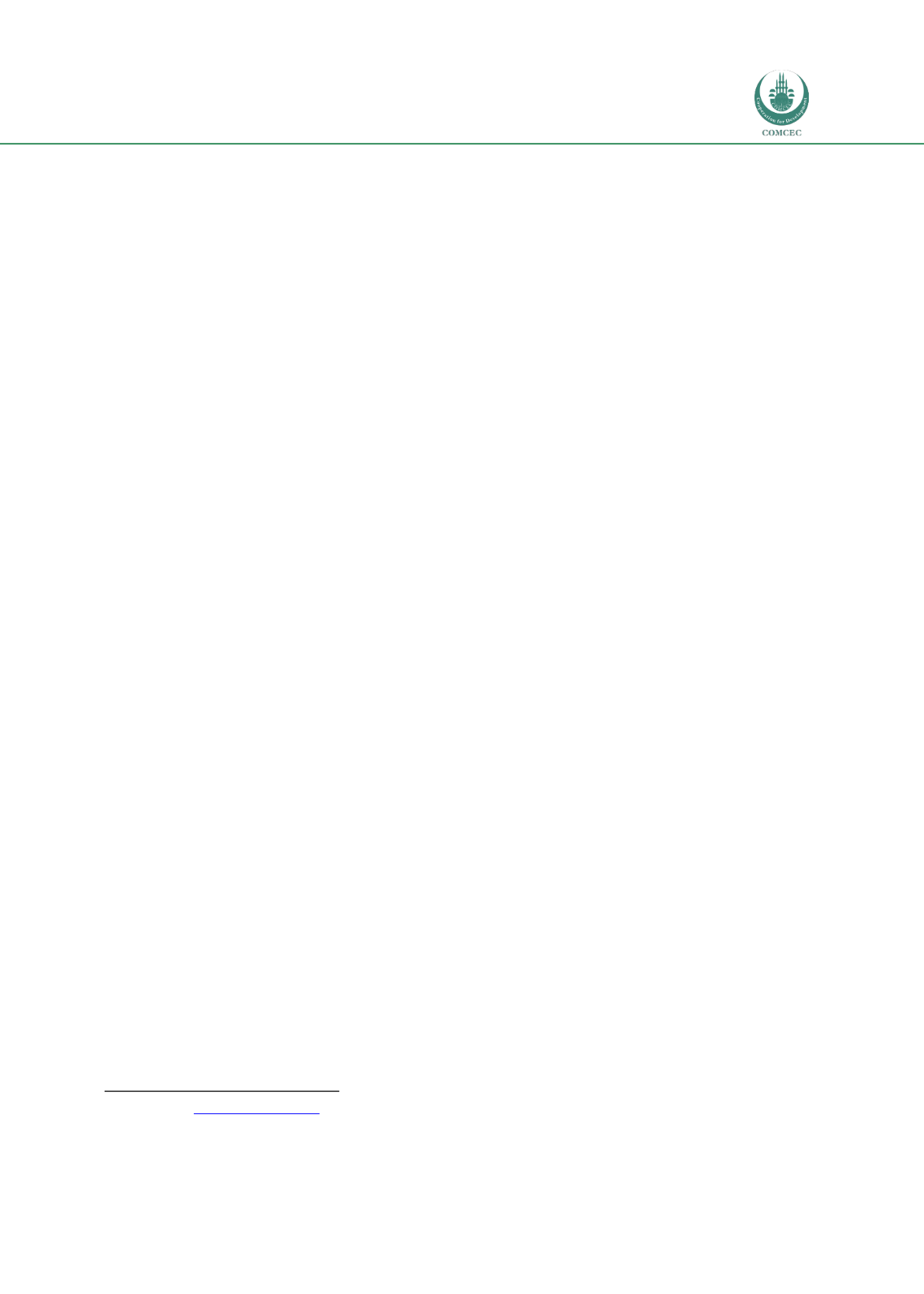

Increasing Agricultural Productivity:
Encouraging Foreign Direct Investments in the COMCEC Region
63
Wheat is the main staple food commodity in Saudi Arabia, and the state Grains and Silos Flour
Management Organization (GSFMO) was and remains the principal purchaser, miller, and
distributor of wheat and flour. The Kingdom in the 1970s launched an ambitious program to
become self-sufficient in wheat by guaranteeing farmers a price of 3,500 riyals ($933.50) per
metric ton, roughly six times the then-prevailing world market price.
By the early 1990s, the Kingdom had a large enough surplus – production had grown from some
3,000 MT in the early 1970s to reach a peak of 4.5 million MT in 1993 (as compared to domestic
consumption of around 2 million MT at the time) - to export some of its crop to countries of the
former Soviet Union and to donate some as food aid to other Muslim countries. However, faced
with chronic budget deficits from the mid-1980s on, the government in the mid-1990s cut the
guaranteed price, initially to SAR2,000 per MT and subsequently to SAR1,500, and again to
SAR1,000 ($266.67), the current level. This amount is substantially lower than the current
world market price of $325 per MT
84
. The decision to reduce the guaranteed price was also
motivated by a growing awareness that Saudi Arabia’s rapidly growing population and industry
were putting increasing pressure on water resources, and that price guarantees for domestic
cereal production, together with subsidized prices for water, was an exceptionally wasteful set
of policies. In 2008 the government announced its intention to phase out domestic production
by 2016, reducing its wheat purchases by 12.5 percent annually.
Also in 2008, a royal decree established the King Abdullah Initiative for Saudi Agricultural
Investment Abroad, intended to provide food security for the Kingdom through large-scale
agricultural investments in countries that are rich in agricultural resources. The initiative has
identified 16 countries as priority investment targets: the initial list included China, India, Mali,
Senegal, the United States, and Ukraine, but another 15 countries have since been added, and
they include Brazil, Canada, Vietnam, and the Philippines, as well as COMCEC Member Countries
Indonesia, Kazakhstan, Sudan, and Turkey.
The King Abdullah Initiative targets eight crops: rice, wheat, barley, yellow corn, soybean meal,
oil seeds, sugar, and green fodder, and also provides for investment in several kinds of agro-
processing, including vegetable oil processing, concentrated animal feed production,
construction of silos, seed production, and construction of abattoirs.
A centrepiece of the program is the establishment of an $800 million fund to provide credit
facilities to Saudi firms that will be engaged in agricultural investments abroad, and also to build
infrastructure, if needed. A
s Figure 28illustrates, Saudi Arabia’s share of world imports of wheat
is low: it is the 23
rd
-largest wheat importing country, taking about 2.5 percent of total world
imports, a figure that has decreased to less than two percent as world trade has grown. But for
other commodities, especially barley, Saudi Arabia takes a much greater share of the total traded
volume – 45 percent in 2008 – so security of supply is an important concern. Moreover, Saudi
Arabia is the fourth-largest rice importer (Nigeria is the largest).
84
World Grain
- www.world-grain.com -and
Index Mundi -
www.indexmundi.com
















